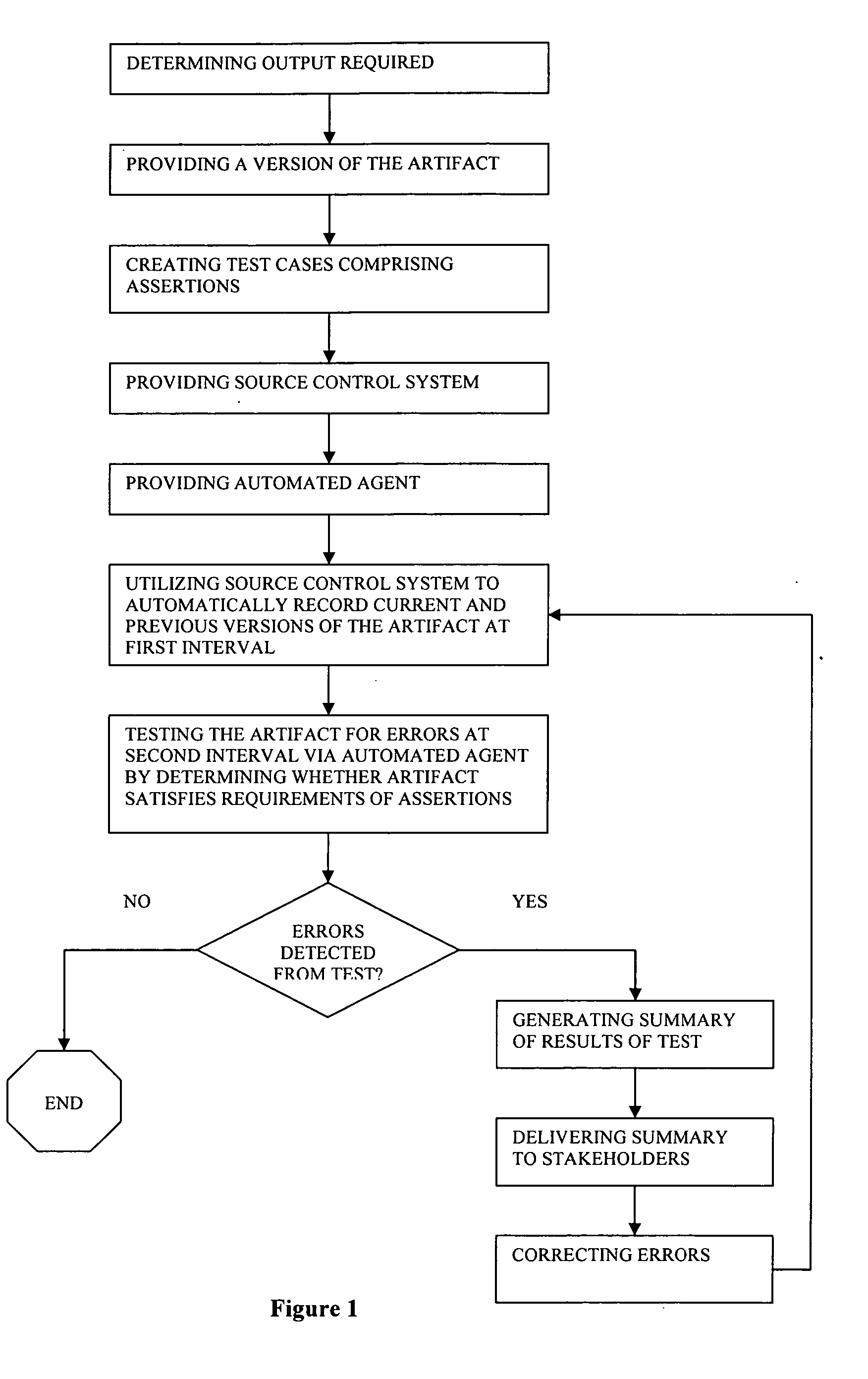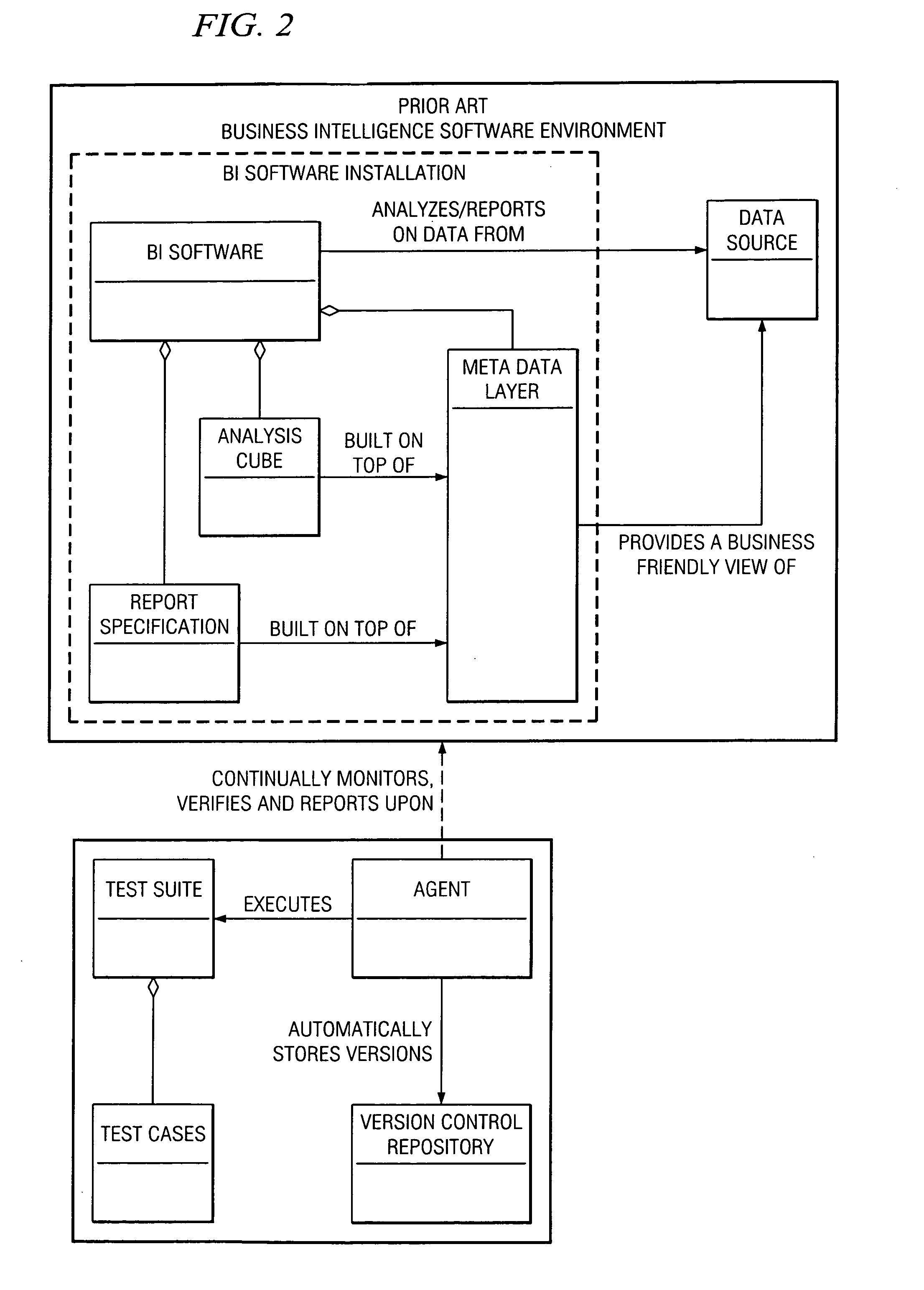Continuous integration of business intelligence software
a business intelligence and software technology, applied in the field of continuous integration of business intelligence software, can solve the problems of not providing the information required, one or more previously created report specifications may fail to execute or produce incorrectly, and the business intelligence system is not well defined, predictable, or testable., and achieves the effect of improving the efficiency of developing, deploying, and altering business intelligence artifacts
- Summary
- Abstract
- Description
- Claims
- Application Information
AI Technical Summary
Benefits of technology
Problems solved by technology
Method used
Image
Examples
Embodiment Construction
[0014] Referring now to the Drawings, and in particular to FIG. 1, there is shown a flowchart illustrating the steps of one embodiment of the invention. The method of continuous integration and automatic version control can be used in conjunction with any business intelligence artifacts, including report specifications, analysis cubes, metadata models, etc.
[0015] When a business intelligence artifact is requested by a stakeholder, typically a business consumer, the first step of the invention is determining the output required from the business intelligence artifact by the stakeholder. This output may be a new business intelligence artifact or the revision of an existing one. Thus, the next step is providing a version of the business intelligence artifact, either by developing an original version of the artifact or creating a revised version. The project of developing or revising a business intelligence artifact may be assigned to one or more authors.
[0016] An author may then crea...
PUM
 Login to View More
Login to View More Abstract
Description
Claims
Application Information
 Login to View More
Login to View More - R&D
- Intellectual Property
- Life Sciences
- Materials
- Tech Scout
- Unparalleled Data Quality
- Higher Quality Content
- 60% Fewer Hallucinations
Browse by: Latest US Patents, China's latest patents, Technical Efficacy Thesaurus, Application Domain, Technology Topic, Popular Technical Reports.
© 2025 PatSnap. All rights reserved.Legal|Privacy policy|Modern Slavery Act Transparency Statement|Sitemap|About US| Contact US: help@patsnap.com



